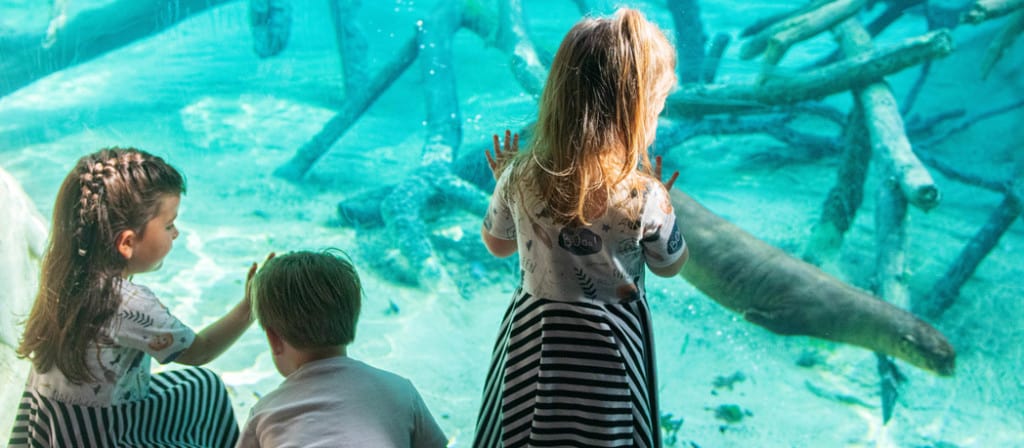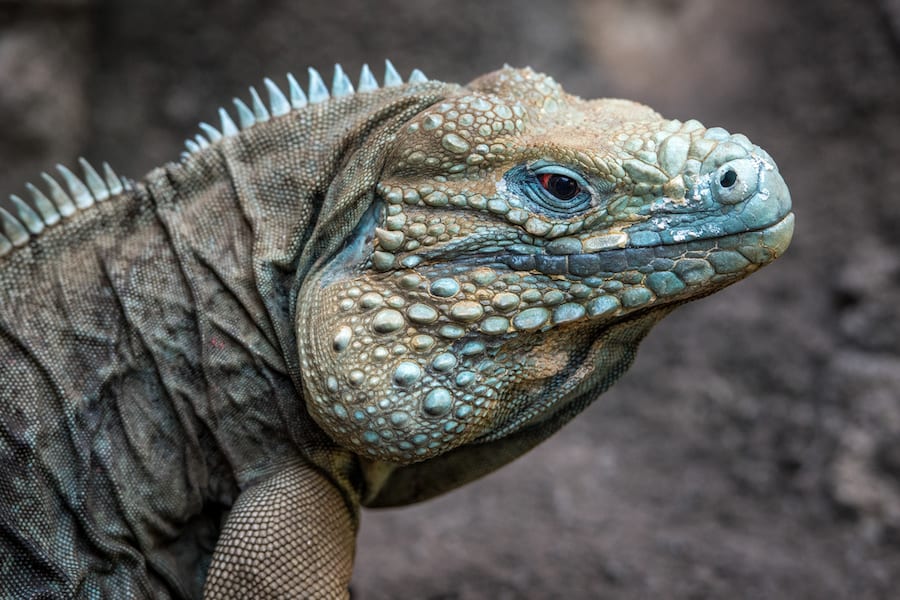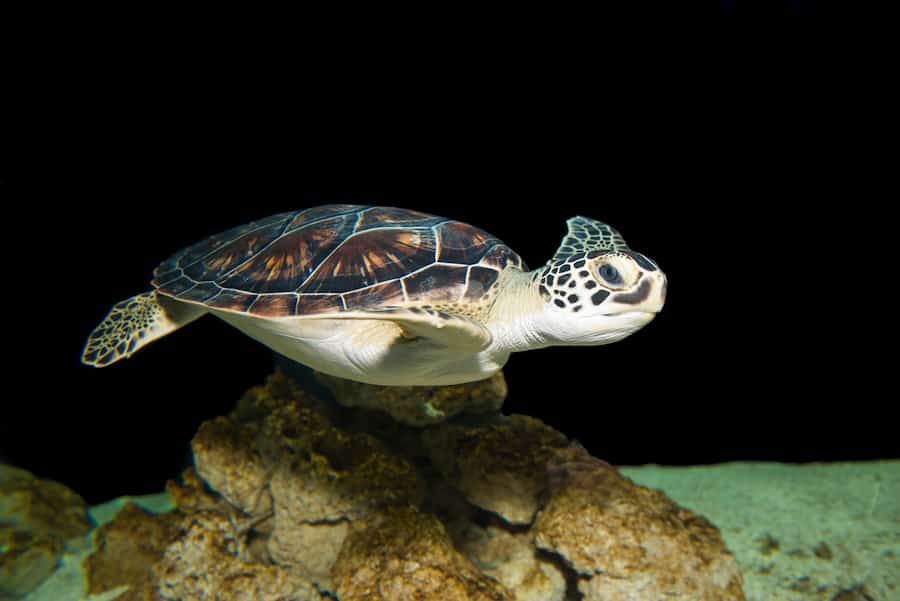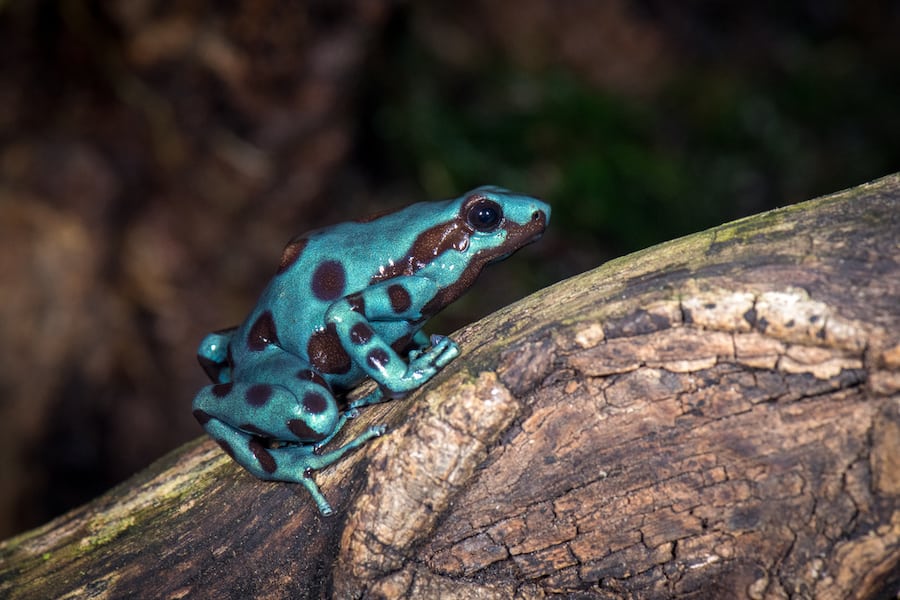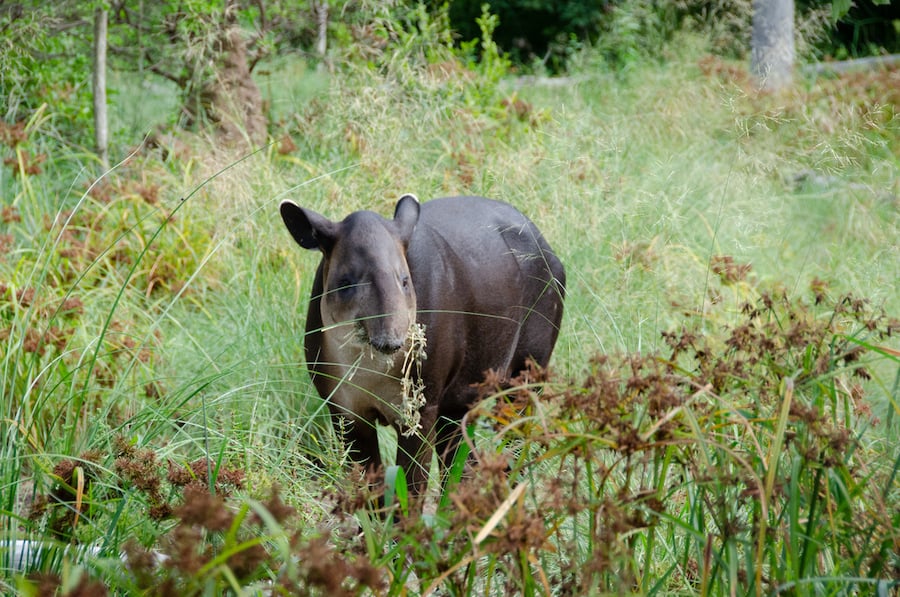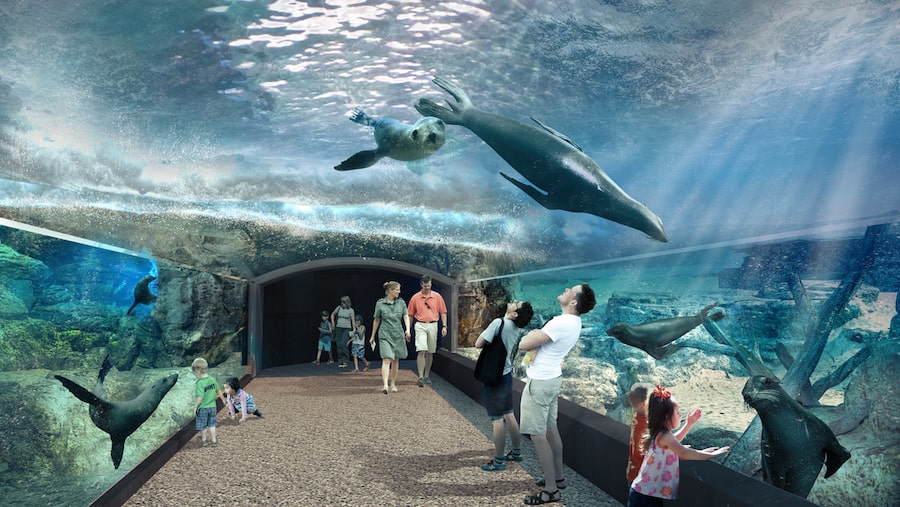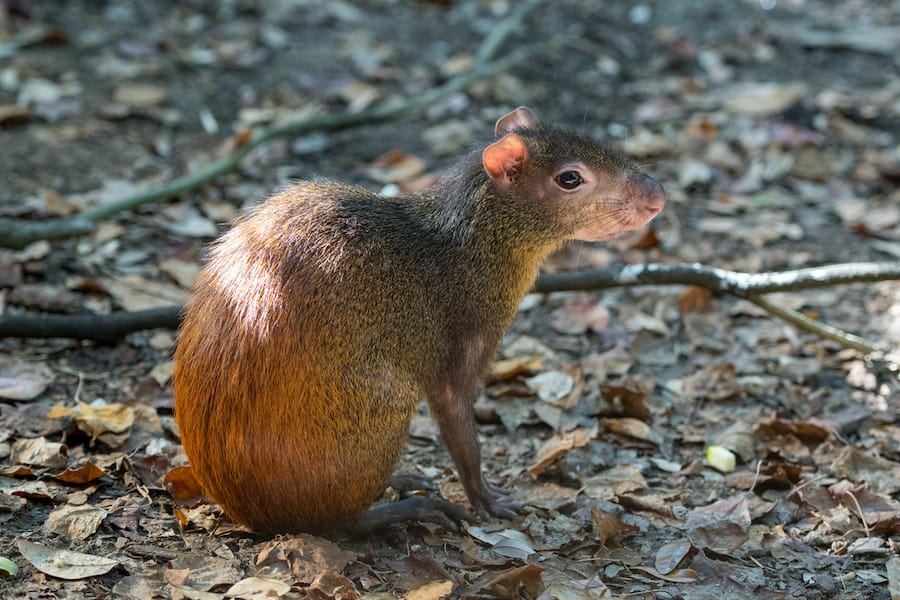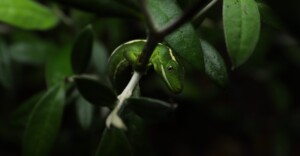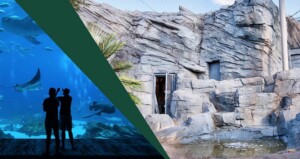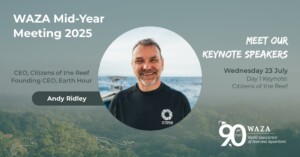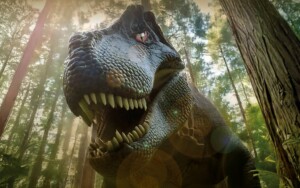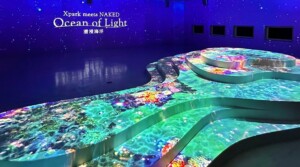Houston Zoo’s president and CEO Lee Ehmke spoke to blooloop about his background in environmental law, landscape architecture and habitat design and the zoo’s development under his leadership. Throughout the attraction, immersive habitats show how the animals evolved to live, and are linked with the zoo’s conservation initiatives.
“I have a lifelong fascination with animals and nature. I always wanted to be involved in that in one way or another,” says Ehmke on his entry into a zoo career.
“My first career, which was short, was environmental law. I was hoping to do things to positively impact conservation that way.
“But at the same time, I’d always been interested in what was happening in the evolution of zoos and aquariums. These institutions have transitioned from being primarily entertainment and/or science-focused institutions, to ones that are now primarily advocating for and effecting conservation.
“I saw that movement happening in the seventies and eighties. And I was always interested in its physical manifestation, which is exhibit design: how animals are presented to people in zoos.”
Seeing the bigger picture
He realised in the eighties that there was a small profession emerging around that idea of creating habitats for animals that were also telling stories about the animals in the wild, and helping people understand the importance of preserving habitat as part of conservation:
“I went back and studied landscape architecture, with the specific intent of using it for what I’ve been doing since then, which is designing and building habitats that are, first and foremost, great for the animals, providing opportunities for them to do as much of their natural behaviour as possible, but also really reinforcing the message that wildlife conservation requires habitats. “
“Animals require their habitats. That’s what they’ve evolved to be in. Making that implicit as part of the guest experience, so people see animals in the context of where they belong, is better for everyone. It’s better for guests and better for the animals. And it’s important as part of the evolution of our conservation organisations over the last couple of decades.”
Moving from exhibit designer to administrator was, he explains, a natural progression:
“I’m interested not just in the design aspects, but also in the bigger picture of how we communicate to the world about what we’re doing, and how we make it all happen. Becoming an executive director allowed me to do that in Minnesota, and now here in Houston.”
Houston Zoo’s mission
Ehmke has been at Houston Zoo for six years. Under his leadership, the zoo is transforming from good to world-class. It is home to beautiful and immersive habitats, engaging guest experiences, and has a commitment to saving wildlife.
“It all stems from a strategic plan that we initiated when I first got here. We spent about a year really examining the role of our zoo and zoos in general, as we moved into the 21st century and the idea that we really needed to explicitly state and embody the idea that the zoo exists in order to help save animals in the wild.”
“It became a branding piece. Bringing the branding to life is now through the master plan and the new exhibits that we’re building.
“We intentionally focus on making very strong links between our exhibits and our conservation programmes. Both those already in existence and those we are starting up. So there’s a direct connection between work that’s happening in the wild and the experience that guests are getting in the zoo.
“The interpreted storylines of each of our major new exhibits are linked directly to the work that we’re supporting in the wild, and what, as individuals, our guests can do themselves in their lives to help deal with the threats to the wildlife that we’re exhibiting at the zoo.”
A master plan
The master plan was conceived in 2016 and 2017. This was followed by the launch of a $150 million capital campaign to implement it:
“We are now well into that campaign and have raised over $134 million. The idea was always to do it in stages; to build pieces of it, to create momentum and to have something interesting for guests on an annual basis as we move towards our Centennial.
The whole thing was a bit fast-track because of our board’s desire to really make a strong statement in time for our hundredth anniversary, which is next year.
We’ve completed three or four of the major projects that we had set out to do. We’re in the process of building the biggest centrepiece project, which is the Galapagos Islands project right now. Even with COVID, we’ve been able to maintain the momentum on the construction, the opening, and the fundraising for the campaign.”
South America’s Pantanal at Houston Zoo
Houston Zoo’s latest offering is its South America’s Pantanal exhibit. This is an immersive environment devoted to showcasing the animals of the world’s largest wetlands.
Its approach is different from a traditional zoo exhibit, where animals tend to be grouped by type. Here, the exhibit is the complete ecosystem, including the animals, from fish, reptiles and birds to large mammals, that coexist in it.
“I think it turned out even better than I had hoped,” says Ehmke.
“It’s a stunning exhibit. Again, it really embodies that idea of a place where we had been supporting conservationists and engaging our staff in the conservation of that region for many years. That is the primary reason we chose it. The other is that it’s one of the great wildlife centres on planet Earth. But not many people know about it.
“I thought it was important to create a very specific place-based exhibit. One that helps tell the story about this amazing centre of wildlife. At the same time, it really made a lot of sense here in Southeast Texas. The environment and the climate are similar. Even the cultures are similar.”
Linking Texas and Brazil
It is interesting, he says, that this particular region of Brazil is not a protected National Park:
“95% of the Pantanal is privately owned cattle ranch land. A kind of coexistence is starting to develop between the people who live and ranch there and the wildlife.”
“That has a lot of resonance with Texas, which is also primarily private land. A lot of conservation happens not in government-protected areas, but on private property. So the climate, the cowboy culture, the private land ownership, and then our history with conservation in that region were all really strong rationales for making the Pantanal one of our major focus exhibits.”
Houston Zoo’s new immersive experience
The new exhibit at Houston Zoo covers over four acres:
“We’re a fairly small zoo; we’re 55 acres,” Ehmke says. “Compared to some of the other major zoos, we have a limited site. But we were able to redevelop an underutilised section of the zoo into a four-plus acre habitat.”

“It’s an immersive experience. You go through several habitats that you might find in the Pantanal, with great animal experiences up close. There are giant river otters, and anacondas underwater. Then it moves into the grassland areas, a big mixed-species habitat, with giant anteaters, and tapirs, and capybaras.
“It represents the whole ecosystem because it’s not just the big mammals that are featured; we have a lot of birds, amphibians, reptiles, and fish. The idea of trying to take a slice of an ecosystem and show it in its entirety worked out pretty well.”
Exhibit design and construction
Ehmke’s background in exhibit design must come to the forefront when planning new exhibits, even in his current role. He says:
“We have a team that works on it. We bring in consultants; probably the best zoo designers in the world are working with us on this. And then the team here at the zoo have a lot of great ideas. I won’t deny that I get my pencil out once or twice and have a go!”
For this project Mark Van Wickler, Houston Zoo’s Senior Director of Exhibit Design, and his team worked with COST of Wisconsin, an industry leader in theme and speciality construction. Exhibits were developed in such as way as to maximize construction efficiencies. This meant that the team could stick to the condensed project schedule.
“It is always a privilege to work with great artisans,” says Greg Marks, COST’s Executive Vice President. “Between our artistic talent and Mark’s team, we were able to deliver a very realistic Pantanal experience.”
COST worked alongside zoo staff, exhibit designer Studio Hanson|Roberts, and Tellepsen Builders to provide shop drawings and scale models. In addition, the company provided secondary steel and structural shotcrete coats throughout the exhibits. The COST team was responsible for simulated rockwork and earthen texture finishes in the otter, macaw, jaguar exhibits, as well as in some common areas.
Facing challenges
Ehmke believes that the challenges facing the wild environments can be addressed:
“I think you have to be an optimist if you’re a conservationist. When you look objectively at all the threats and challenges globally, it is easy to be overwhelmed by it all. But there are victories that can be pointed to.
“One of the underlying principles of our Texas Wetlands exhibit that we opened a couple of years ago at Houston Zoo was that we featured three species of animals, all of which were on the path to extinction just a few years ago. These are the bald eagle, the American alligator, and the whooping crane.”
“All three of them are now recovering to some degree. That is because people said, ‘We don’t want to lose these animals, and we have to change laws, or change practices, or change land use in order to sustain these animals.’
“I think that’s the kind of hopeful success story that is more impactful for people. Rather than doom and gloom all the time. Underlining what individuals can do in their own lives that have a positive impact on these issues is also important.
“I do have lots of hope and optimism. We’re involved in a lot of supportive conservation in Central Africa for mountain gorillas. This is another species that was down to fewer than 300 animals, not long ago. Now there are more than a thousand, and they’re thriving. We need to focus on the positives, and keep fighting.”
Houston Zoo’s conservation projects
Outlining the conservation initiatives that Houston Zoo is involved in, he says:
“Lots of these initiatives approach conservation in different ways. We do not specifically hire conservationists to go out into the world. Instead, we go out into the world and find conservationists who are already doing good work, or have plans for good work in their own countries, and then support them.”
“We do so financially. But I think probably more than the money, it’s also about the entire organisation doing things to help support that work. For example, if it’s a small organisation that needs to develop a website, our website developers will help them do that. Our accounting team has helped with business planning for some of the organisations.
“Forging long-term relationships is important, rather than just saying, ‘Here’s a grant, now come back to us next year and give us another proposal’. We tend to find organisations and individuals that we want to work with for the long term. We support them, financially and otherwise, for many years, in some cases.”
Building a relationship
What really makes it work, he says, is that it’s a two-way street:
“We have those teams and individuals in places like Brazil or Madagascar or Rwanda. When possible, we have them visit our zoo and interact with our staff and our board and our donors. So they feel and are represented as part of our extended team.”
“It is built on a relationship model. This is as opposed to purely a funding model, or the model that some organisations are able to do, where they hire scientists and conservationists to create their own programmes in the field. Our initiatives are more grassroots oriented.”
Conservation on Houston Zoo’s doorstep
Then there are the conservation programmes at home in Texas:
“They are more focused on species recovery,” says Ehmke. “They are concerned with working with government agencies and other groups on captive breeding programmes for two species. One is the Attwater’s Prairie chicken. This is a type of grouse that was once widespread in Texas but has lost a lot of habitat. The other is the Houston toad.”
“We actively help manage them in a zoo situation, managing breeding and reintroduction programmes into the wild. That’s a different model, but one that makes a lot of sense for our local conservation efforts.
“We’ve been breeding [them] at Houston Zoo as part of a consortium of organisations, and have made a big commitment to that programme by building a non-exhibit facility. This is actually located on the grounds of NASA here in Houston, which had a lot of space.
“We breed these animals in a secluded area, get them softly reintroduced to their habitat. This is done in large enclosed areas where they learn to forage. Then many of them are then released into reserves where we’re helping to re-establish the wild population.”
Finding a balance
Balancing animal welfare, the welfare support staff, and the needs of the public who want to be entertained as well as educated is something that has to be kept in mind.
“It’s a constant conversation,” he says. “We’re learning every day and every year about how better to take care of our animals. We are learning to provide what they need to not just survive in our zoos, but to thrive.”
“One of our priorities is a real strong focus on animal wellbeing. We are always thinking, in all the ways that we operate and organize the facility, about how to maximize that.
“Our animal care team has really progressed from simply being caretakers to doing research. And trying to quantify, when we see conditions for animals that maybe aren’t optimal, how to address that. It’s a change that is evident in zoos and aquariums around the world. But I feel like we’re really making some headway in that here.”
A new approach at Houston Zoo
“Part of that is, as we build these new facilities, making sure that we’re providing the space and the variety within the space that provides activities for the animals, and the ability at times to be secluded and hide.
“That is sometimes in direct opposition to why people come to the zoo – they want to come to see animals. A lot of our thinking right now is how to communicate to our guests that they might not see the Jaguar that day because he’s feeling like he wants to be private.”
“I won’t say we’ve cracked that nut. It’s not entirely done. But finding ways to communicate the messaging around animal wellbeing and care is something that we’re really excited about, while keeping guests and animals happy.”
Educating and inspiring guests
One of the primary functions of a zoo is to educate people. This allows them to form a connection with wildlife and the environment and means they are motivated to make positive changes. So, how important is it to reach outside the zoo’s usual audience?
Ehmke says:
“Houston Zoo is different from a number of zoos that I’ve been familiar with in the past. We attract a broad visitorship. A large swath of our community uses the zoo.”
“In fact, we are probably the most ethnically diverse city in the United States and our visitation mirrors that regional breakdown, which is unusual.
“People, especially in urban areas, are increasingly alienated from or isolated from nature. I think we have the opportunity and the obligation to make that reconnection here at the zoo. I’m pleased with the diversity of our audience, and our ability to reach and serve that really broad swath of our community.”
Future plans
Concerning future plans, in both the short and longer-term, he says:
“We did a master plan in 2017. This looked at the entire campus and suggested some future changes beyond those that we’re committed to in this campaign. Again, they are all around that principle of linking our animals here at the zoo with the conservation focus areas that we are working on around the world.”
“Long-term, we have some possibilities for doing some Southeast Asian animal exhibits that link with programs that we have here. For instance, our elephant breeding program, which is probably the most successful in the country right now.
“Then there are some of the primates and other animals from Southeast Asia that we have here at the zoo. These are not currently in state-of-the-art immersion habitats or linked together physically into a single experience like the Pantanal. So there is a whole tropical Asian component that we’d like to look at.”
Houston Zoo looks to the future
The children’s zoo is now 20-plus years old.
“I think we have the opportunity to really rethink what a children’s zoo could be. Or whether there should even be a children’s zoo. Those are not definite plans, but our master plan does zone out those two areas.”
“There is also the continuation of some of our Africa exhibits that we started developing back in the 2005 to 2015 era. We haven’t finished that side of the zoo. Again, those are not definite plans, but they are big zones that we’ve laid out for future development.
“Obviously, when you do a campaign of the scale that we’ve just embarked on, which is by far the biggest that we’ve ever done, there will be a breathing space to catch our breath and re-look at our strategy and see what has changed since we did the plan just a few years ago.
“The world has certainly changed, and I expect the plan will evolve as well.”
An ongoing process
In conclusion, he says:
“The idea is that we will never finish Houston Zoo. There’s always an opportunity to change. Things that we did 20 years ago that were then state-of-the-art we’re going to want to rethink. Even the recent stuff will need to be refreshed at some point. Or re-thought to an extent.
“It’s an ongoing process for the team here. It’ll be exciting to jump back into that planning mode again because we’ve been really focused on the four or five projects that are in this campaign right now. In the next couple of years, we’ll probably be starting to think about the next 10.”
All images kind courtesy of Houston Zoo
